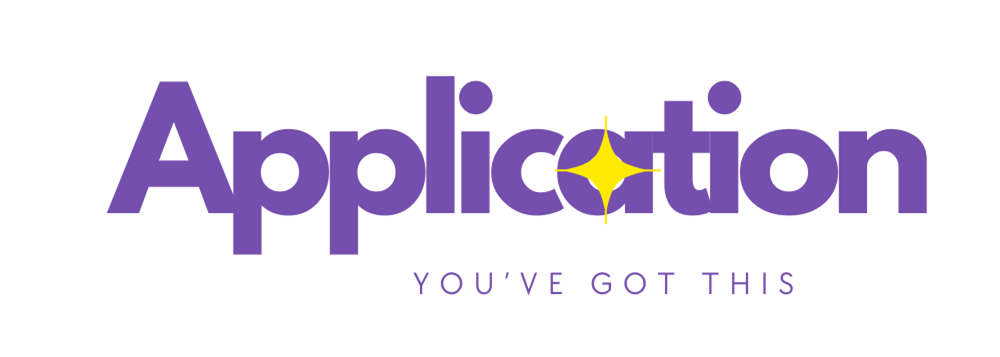Developing a Need for Research
SoTL Research Foundations: Developing a Need for Research
Introduction
Research in the field of education, particularly within the scholarship of teaching and learning (SoTL), is driven by the need to address specific problems or gaps. These needs may arise from practical challenges observed in the classroom or from gaps identified in the existing peer-reviewed literature. The motivation for conducting SoTL research is to enhance educational practices and outcomes by systematically investigating these needs. Knowing what problem to examine is only part of the process.
Quantitative research, in particular, relies on theoretical frameworks or models to explain the phenomenon under study. These frameworks provide a lens through which the problem can be viewed and understood, serving as the foundation of the research. This introduction aims to prepare the reader to explore various theories and models relevant to their research problem. Moreover, quantitative methodology is rooted in a deductive paradigm, where hypothesis testing is the primary means of investigation. This approach involves formulating hypotheses based on theoretical frameworks and then testing these hypotheses through empirical data collection and analysis.
Background
Review of the Literature
The literature review is a fundamental component of any research study. Its purpose is to survey existing research to identify limitations, weaknesses, or gaps the proposed research can address. Conducting a thorough literature review involves systematically searching for and evaluating peer-reviewed articles, books, and other scholarly sources. This process helps researchers understand the current state of knowledge on a topic, including what has already been studied, the methodologies used, and the findings reported.
The information developed from a literature review includes a comprehensive understanding of the topic, identifying key themes and trends, and recognizing gaps or inconsistencies in the literature. This information is crucial for proposing a research problem that addresses these gaps or extends existing research meaningfully. For example, if the literature on student engagement primarily focuses on traditional classroom settings, a gap may exist in understanding engagement in blended learning environments. Identifying such gaps allows researchers to formulate specific research questions and hypotheses that contribute to the broader academic discourse.
Theoretical Framework
A theoretical framework is a structure that guides research by clearly explaining the relationships between the variables being studied. It is derived from existing theories and models validated through prior research. The framework helps define the study's direction, formulate hypotheses, and select appropriate data collection and analysis methods.
In quantitative research, the theoretical framework explains how antecedent characteristics or behaviors lead to specific consequent outcomes. For instance, a theory might propose that certain teaching methods (antecedents) influence student engagement and learning outcomes (consequences). Theories often rely on other models or theories to support aspects that are not fully explained. For example, Bean and Metzner's (1985) model of undergraduate student retention describes how student characteristics (antecedents) affect retention rates (consequences). However, this model does not fully define all student characteristics, such as personality traits or motivation, relying instead on other theories like the Big Five personality traits (John & Srivastava, 1999) or Self-Determination Theory (Deci & Ryan, 1985) to fill these gaps.
Integration and Synthesis
The integration and synthesis process involves combining insights from the literature review with the theoretical framework to develop a coherent rationale for the study. This integration highlights the need for research and aligns the research questions and hypotheses with the theoretical foundation. By synthesizing the findings from the literature with theoretical constructs, researchers can identify specific variables to study and formulate hypotheses grounded in theory.
Quantitative Methodology
Quantitative methodology is characterized by its objective, systematic approach to investigating research problems. This methodology uses a deductive paradigm, where hypotheses are derived from theoretical frameworks and tested through empirical data collection and analysis.
The deductive paradigm starts with a general theory or hypothesis and moves towards specific observations. In this approach, researchers begin with a theory, develop hypotheses based on the theory, and then collect data to test these hypotheses. Hypothesis testing aligns with the deductive paradigm by providing a structured way to validate or refute theoretical predictions through empirical evidence.
Theoretical frameworks must align with the variables and instruments used to collect the data. This alignment ensures that the instruments accurately measure the constructs defined by the theory, leading to valid and reliable results. For example, if a study is based on Self-Determination Theory, the instruments should measure constructs like intrinsic motivation, extrinsic motivation, and engagement.
Inferential statistics are used to generalize the results from a sample to a broader population. These statistics help researchers determine the likelihood that the observed effects are genuine and not due to random chance. Researchers can draw conclusions about the relationships between variables by applying statistical tests and making inferences about the broader population.
Quantitative Methodology
Applying quantitative methodology involves several practical steps. First, quantitative methodology is an objective approach, ensuring the research problem is approached impartially. This involves clearly defining variables and ensuring measurements are accurate and reliable. It also requires that all research parameters are defined and described before data collection and analysis.
Quantitative research is also founded on an appropriate theoretical framework that guides the research design and interpretation of results. The theory defines the variables and how they should interact, offering a predictable outcome based on the nature of the phenomenon. The theory may be considered the thread that connects all aspects of the research together, supporting the variables, the instruments, the population, the analysis, and the outcomes.
The deductive paradigm, inherent to most quantitative research, allows one to formulate hypotheses based on the theoretical framework and design the study to test these hypotheses. This involves specifying independent and dependent variables and selecting appropriate statistical tests. The deductive paradigm also allows one to defend or refute the theory based on empirical evidence.
Quantitative research achieves objectivity, in part through well-tested instrumentation. It implements valid and reliable instruments for data collection, which ensures that the data accurately reflects the constructs being studied. Once the data are collected, the SoTL researcher uses statistical analysis to test the hypothesis. This requires the researcher to plan the appropriate statistical methods to analyze the data and test hypotheses, including selecting statistical tests that align with the research questions and data characteristics, ensuring that results are interpretable and meaningful.
Below there are several options to help you create your own NEED FOR RESEARCH. Please take a look to determine which format will work best for you. The "Checklist" is a guide in list form to help you move step by step. The "Application" is instructions in paragraph form. "AI Assist" guides you through prompts so that you can create a research question in AI. The "Worksheet" guides you through traditional and AI assisted prompts to help fill in your specific information. If you need more resources, please view "Related Resources" or contact CIRT at [email protected].
---------- Grouped Links ---------
numOfValidGroupedLinks: 7
SoTL Helper (AI - POE external): https://poe.com/SoTLCIRTBOT49
Purple File: https://cirt.gcu.edu/research/develop/purple
Research Consultation: https://cirt.gcu.edu/research/support/consultation
THINK: https://cirt.gcu.edu/research/support/clubs
Generative AI Tech Tools: https://cirt.gcu.edu/pedagogyfirst
SoTL Value: https://cirt.gcu.edu/research/develop/research_ready/sotl/2
Literature Reviews: RR: https://cirt.gcu.edu/research/develop/research_ready/lit_reviews/1
----------------------------------
-------------- Links -------------
numOfValidLinks: 0
----------------------------------
Related Resources
this.updated: True
links.count: 0
obj.hasPermission(enums.PermissionVerb.Edit): False
numOfValidLinks: 0
linksJSON.groups.count: 1
numOfValidGroupedLinks: 7
numOfValidGroupedLinks -> numOfLinksToDisplay: 7
numOfLinksToDisplay = 7
this.layout = 2
- TrueFalse(True || !True && False)https://poe.com/SoTLCIRTBOT492
- SoTL Helper (AI - POE external) TrueFalse(True || !True && False)https://cirt.gcu.edu/research/develop/purple2
- Purple File TrueFalse(True || !True && False)https://cirt.gcu.edu/research/support/consultation2
- Research Consultation TrueFalse(True || !True && False)https://cirt.gcu.edu/research/support/clubs2
- THINK TrueFalse(True || !True && False)https://cirt.gcu.edu/pedagogyfirst2
- Generative AI Tech Tools TrueFalse(True || !True && False)https://cirt.gcu.edu/research/develop/research_ready/sotl/22
- SoTL Value TrueFalse(True || !True && False)https://cirt.gcu.edu/research/develop/research_ready/lit_reviews/12
- Literature Reviews: RR
view = 2
numColumns = 2
lineBetween = 1
arrowStyle = 3
barStyle = 1
barColor = #470a68
results = 10
Next Level:
Page Options


.png)


